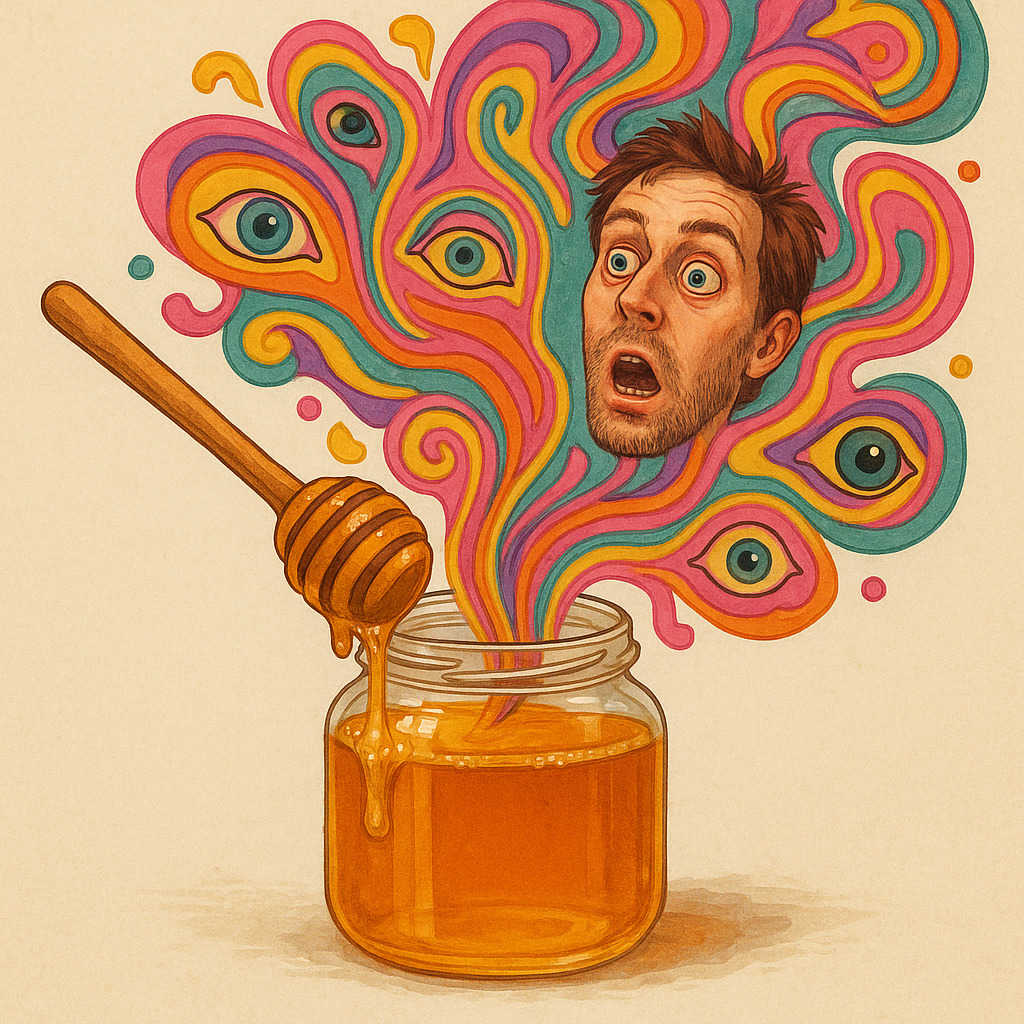🐝 The Giant Bee That Makes Honey... and Hallucinations
Do you like bees? Great. Do you enjoy mystical experiences? Even better. Do you want both... at the same time? Then you've either met the Apis dorsata laboriosa or you're about to fall in love — cautiously. Because her honey might send your mind on a scenic detour through the stratosphere.
🧗♂️ Wait... how high is this cliff again?
Deep in the Himalayan forests of Nepal, between misty cliffs, prayer flags, and the occasional rogue goat, lives one of the largest and most fascinating bees on Earth: the Himalayan giant bee, known to scientists as Apis dorsata laboriosa.
This isn’t your average buzzing backyard buddy. This queen of the skies can reach 3 centimeters in length, with wings that would make some drones insecure. She builds massive exposed hives clinging to vertical cliff faces, often hundreds of meters above ground — because gravity is for mortals.
And you thought reaching the top shelf was hard.
🍯 Mad Honey: the sweet treat with psychedelic surprises
Her honey is famously known as “mad honey” — and that name isn’t metaphorical. The Apis dorsata feeds on rhododendron flowers, and some species of these charming little blossoms happen to contain grayanotoxins — psychoactive compounds that make their way into the honey without losing their punch.
One spoonful of this hallucinogenic honey, and you might experience dizziness, euphoria, visual distortions, or a sudden desire to lie down and rethink your life choices.
In small amounts, it’s been used for medicinal and aphrodisiac purposes for centuries. In larger doses? Well… let’s just say it’s less “healing ritual” and more “accidental spiritual awakening in the bathroom”.
🏹 The extreme honey hunters of Nepal
Enter the Gurung people, the real-life heroes of this story — or possibly action movie extras moonlighting as apiarists. These honey hunters scale sheer cliffs with nothing but rope ladders, woven baskets, and the kind of courage only found in people who’ve clearly never watched a YouTube fail compilation.
Armed with smoke and stick poles, they brave angry swarms of giant bees, high winds, and dizzying heights to collect the precious honey from massive hanging combs.
Think Indiana Jones, but stickier.
🌍 A sacred treat, a toxic souvenir, a black-market hit
In Nepal, mad honey is seen as more than just food: it's part medicine, part ritual, and part legend. It’s sold at high prices and sought after by people looking for natural remedies, spiritual insight, or just a weird story for their next party.
However, in many countries — including the United States and European Union — importing or selling mad honey is restricted due to its potentially dangerous effects. Translation: some customs agent probably had one spoon too many.
🧠 Maybe the bee knows something we don't
There’s something almost poetic about a bee — an insect with a brain the size of a poppy seed — producing a psychedelic substance capable of warping human consciousness.
Maybe the Apis dorsata isn’t just making honey. Maybe she’s making portals. To other realities. To inner truths. Or maybe just to your neighbor’s kitchen floor, where you’ll wake up wondering why you taste flowers.
🍾 Don’t lick the cliff
So yes — there's a bee that lives on cliff faces, grows to monstrous sizes, and makes honey that causes hallucinations. It’s real, not a myth, and it makes energy drinks look like chamomile tea.
Next time you see a regular honeybee, say thanks. At least she won’t send you flying without leaving the ground.








Leave a Comment